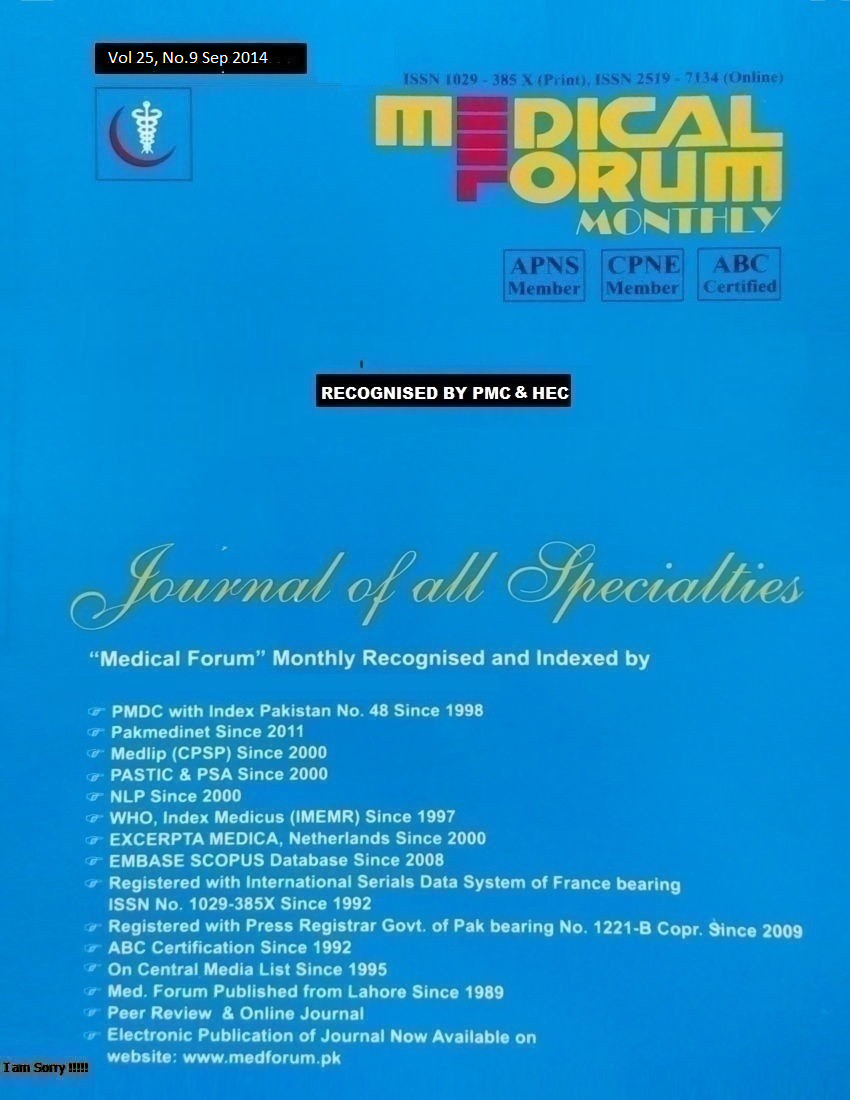
10. Relationship between Type 2 Diabetes Mellitus and Central Obesity
Shaghufta Shafi
Head of the Department of Medicine, Hamdard College of Medicine & Dentistry, Hamdard University, Karachi
ABSTRACT
Objectives: To determine the relationship between type 2 diabetes and central obesity, we investigated the incidence of type 2 diabetes in people visiting the opd of hamdard medical hospital.We also investigated the independent effects of central obesity compared with those of overall obesity
Study Design: Comparative study
Place and Duration of Study: This study was conducted at Hamdard University Hospital between October 2012 to September 2013
Material and Methods: The subjects were 174 men and 261 women selected from 469 people who had undergone medical examinations at OPD of hamdard medical college between 2012 till 2013.Participants with central obesity were determined according to the new criteria announced by the IDF9. Central obesity in south east population is defined by the IDF as waist circumference ≥90 cm for men and ≥90 cm for women. Participants with overall obesity were defined as those with BMI ≥25.0 kg/m2
 Results: The results of logistic regression analysis showed that both central obesity and overall obesity were closely related to type 2 diabetes and that the relative risks of occurrence of type 2 diabetes adjusted for age, sex, systolic blood pressure, total cholesterol, and smoking were 2.59 for central obesity and 2.06 for overall obesity. Central obesity maintained its significance when additionally adjusted for overall obesity, but overall obesity lost its significance when additionally adjusted for central obesity
Results: The results of logistic regression analysis showed that both central obesity and overall obesity were closely related to type 2 diabetes and that the relative risks of occurrence of type 2 diabetes adjusted for age, sex, systolic blood pressure, total cholesterol, and smoking were 2.59 for central obesity and 2.06 for overall obesity. Central obesity maintained its significance when additionally adjusted for overall obesity, but overall obesity lost its significance when additionally adjusted for central obesity
Conclusion: In conclusion, our study suggested that the current cutoff points of waist circumference in the IDF definition for Asian population is useful for assessing the risk of type 2 diabetes and that central obesity may be more useful than overall obesity for evaluating the risk of type 2 diabetes. Key Word: Type 2 Diabetes Mellitus, Central Obesity, Cholesterol, Smoking
